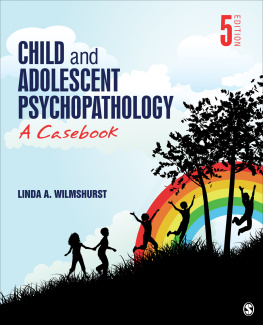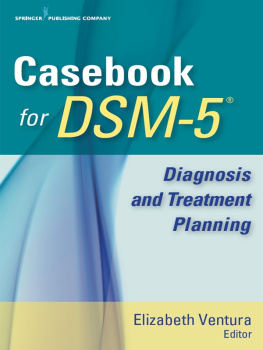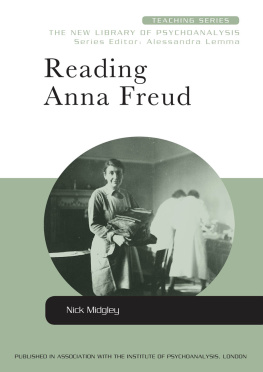Copyright 2022 by SAGE Publications, Inc.
All rights reserved. No part of this book may be reproduced or utilized in any form or by any means, electronic or mechanical, including photocopying, recording, or by any information storage and retrieval system, without permission in writing from the publisher.
All third-party trademarks referenced or depicted herein are included solely for the purpose of illustration and are the property of their respective owners. Reference to these trademarks in no way indicates any relationship with, or endorsement by, the trademark owner.
FOR INFORMATION:
SAGE Publications, Inc.
2455 Teller Road
Thousand Oaks, California 91320
E-mail: order@sagepub.com
SAGE Publications Ltd.
1 Olivers Yard
55 City Road
London EC1Y 1SP
United Kingdom
SAGE Publications India Pvt. Ltd.
B 1/I 1 Mohan Cooperative Industrial Area
Mathura Road, New Delhi 110 044
India
SAGE Publications Asia-Pacific Pte. Ltd.
3 Church Street
#10-04 Samsung Hub
Singapore 049483
Library of Congress Cataloging-in-Publication Data
Names: Wilmshurst, Linda, author.
Title: Child and adolescent psychopathology : a casebook / Linda A. Wilmshurst.
Description: Fifth edition. | Thousand Oaks, California : SAGE Publications, Inc., 2021. | Includes bibliographical references and index. | Summary: Child and Adolescent Psychopathology: A Casebook provides students with an opportunity to gain deeper insight into a wide range of disorders within the context of the diagnostic framework of the DSM-5. This supplemental textbook provides an abundance of real life cases which demonstrate methods in assessing and treating a wide spectrum of child and adolescent psychopathologies in a variety of settings. Each case presents an opportunity to practice and develop clinical skills in the assessment, diagnosis, and treatment of childhood disorders from a number of theoretical perspectives and at various levels of interest and expertise. The book features current trends in assessment, diagnosis, treatment, and research. It is an ideal hands-on resource for a child and adolescent psychopathology course. The fifth edition includes a new case study on depression, expanded coverage of trauma-related disorders, a new glossary, and updated assessment materials and references throughoutProvided by publisher.
Identifiers: LCCN 2021028424 | ISBN 9781071822814 (paperback) | ISBN 9781071822845 (adobe pdf) | ISBN 9781071822821 (epub) | ISBN 9781071822838 (epub)
Subjects: LCSH: Child psychopathologyCase studies. | Adolescent psychopathologyCase studies.
Classification: LCC RJ499 .W46 2021 | DDC 616.8900835dc23
LC record available at https://lccn.loc.gov/2021028424
Printed in the United States of America
This book is printed on acid-free paper.
Acquisitions Editor: Lara Parra
Editorial Assistant: Ivey Mellem
Production Editor: Preethi Agnes Thomas
Copy Editor: Christobel Colleen Hopman
Typesetter: TNQ Technologies
Proofreader: Benny Willy Stephen
Indexer: TNQ Technologies
Cover Designer: Candice Harman
Marketing Manager: Victoria Velasquez
Preface
Tell me and Ill forget. Show me, and I may not remember. Involve me, and Ill understand.
Native American Proverb
The major goal of this casebook is to provide the reader with an opportunity to gain deeper insight into the complexities of child and adolescent psychopathology and to apply this knowledge within the context of the diagnostic framework of the Diagnostic and Statistical Manual of Mental Disorders (DSM-5; APA, 2013).
A case study approach is used to involve the reader in the simulated practice of child psychopathology. As problems unfold, a dynamic illustration of a given childs problems can be observed during several different stages of development and from the perspective of different theoretical viewpoints. Within a developmental context, complex problems of child and adolescent adjustment become grounded in the realities of family and school experiences. Case studies presented in this text are especially relevant to the study of child and adolescent psychopathology because all cases are based on actual clinical cases. Although the cases have been altered to maintain confidentiality, they continue to represent actual living files and, as such, provide a unique opportunity to capture the dynamics of child and adolescent psychopathology in virtual presentations of life as the children develop and their stories unfold before the readers eyes.
Cases have been selected to include a breadth of childhood and adolescent psychopathology and are representative of the high rates of comorbidity demonstrated in this population. Each case presents an opportunity to practice and develop clinical skills in the assessment, diagnosis, and treatment of childhood disorders from a number of theoretical perspectives and at various levels of interest and expertise. The text is suitable for upper level undergraduate students in its rich presentation of case materials that demonstrate applications of many of the core concepts in child psychopathology (e.g., how therapists from differing theoretical backgrounds would approach a given case). The text is suitable for graduate students in providing opportunities to practice and hone clinical skills across a breadth of clinical cases with opportunities for in-depth discussion and application in specialty areas of concentration: assessment, diagnosis, and treatment. The text can be a valuable resource for courses in child psychopathology, abnormal child psychology, developmental psychopathology, school psychology, behavior problems of childhood, child psychotherapy, child assessment, and case formulation in child psychopathology.
- Case studies provide diagnostic information at two levels. Case studies are presented to illustrate the dual nature of diagnosis in its emphasis on diagnosis as case formulation (an ongoing process of information gathering, problem-solving, and hypothesis testing) and diagnosis as the formulation of an outcomes statement (the classification or conclusion).
- Case studies provide comprehensive assessment information. Case information is available from a variety of sources (case history, observations, psychometric assessment, raw data, and clinical interviews) and developmental contexts (individual child, family, school, and peers) to encourage students to develop skills in integrating information from diverse sources.













